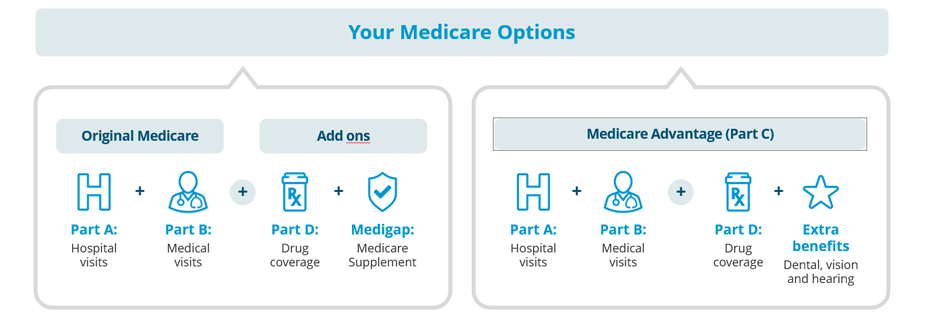Medicare is Personal Health Insurance
Medicare doesn’t cover your spouse or children, only you.
It’s for people 65 or older, younger people with certain disabilities, and people of any age with end-stage renal disease or Amyotrophic Lateral Sclerosis (ALS).
To get Medicare, you must be:
- A United States citizen, or
- A legal resident who’s lived in the country for at least 5 years


Medicare has Different Parts
- Medicare Part A – Covers hospital visits
- Medicare Part B – Covers doctor visits
- Medicare Part C – Medicare Advantage
- Medicare Part D – Covers prescription drugs
- Medicare Supplement (Medigap) – Helps you cover out-of-pocket costs

Medicare Part A and Part B are administered by the federal government. These two parts are known as Original Medicare.
Part C, Part D and Medical Supplement plans are available from private healthcare companies like CareFirst BlueCross BlueShield.
How Can I Save on Medicare Costs?
To save on healthcare expenses, it’s important to visit doctors, hospitals and healthcare facilities that accept Medicare.
Participating Providers
These are doctors, specialists and primary care physicians who accept Medicare and always accept the full payment of a Medicare-approved amount for health services.
Non-Participating Providers
These are doctors who accept Medicare. However, they DO NOT accept the full payment. These providers can charge up to 15% more than the Medicare-approved amount.
Opt-Out Providers
These are doctors who do not accept Medicare at all. You will be responsible for 100% of the bill.
LEARN
Get to know the different parts of Medicare—Part A, B, C, D and Medicare Supplement.
EXPLORE
See how the different parts of Medicare can be combined to create a plan that fits your needs.
PREPARE
Knowing when to enroll in Medicare is important because it can save you money.


